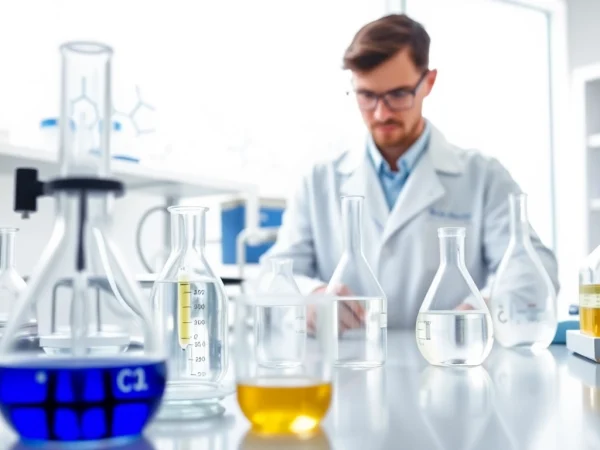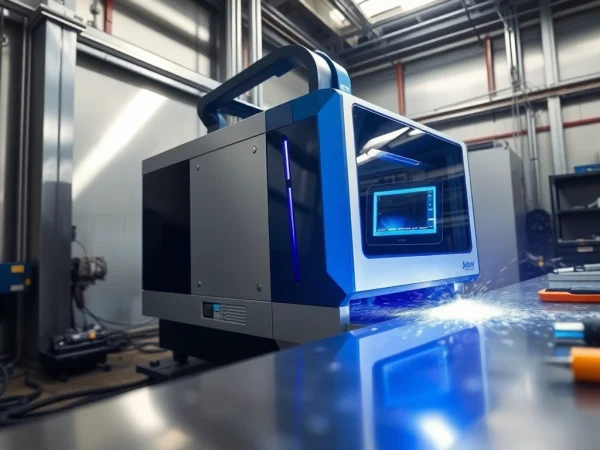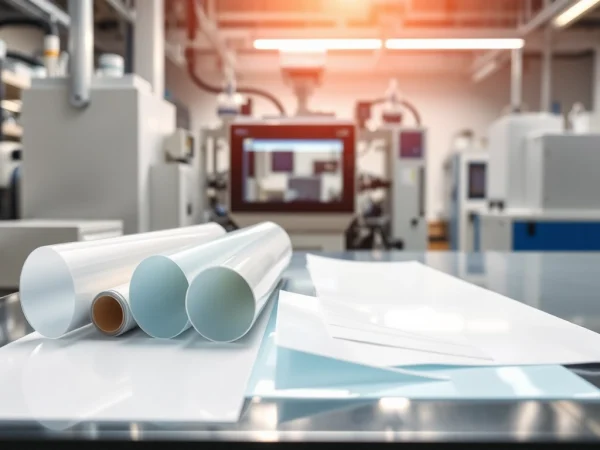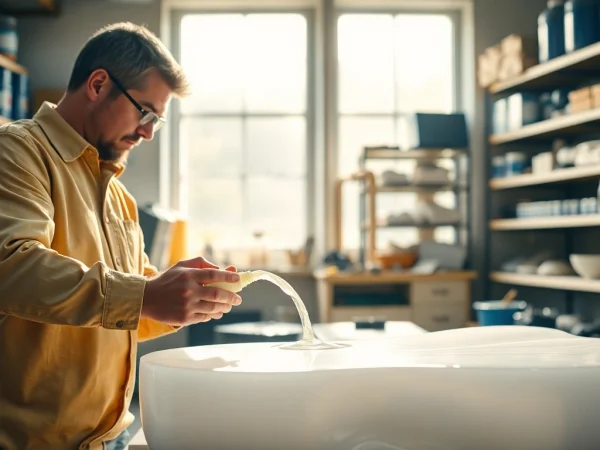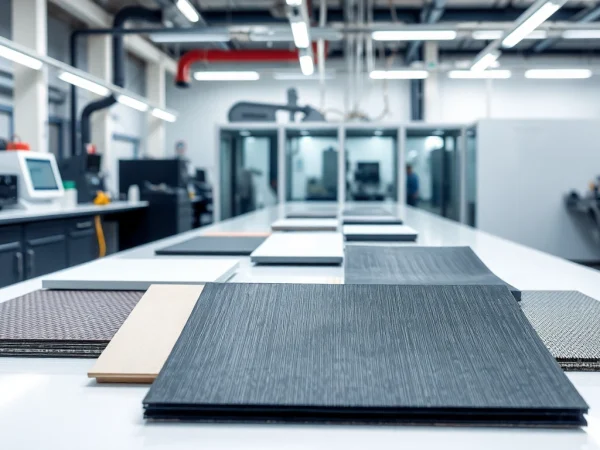Maximizing Performance with Infusion Resins for Advanced Composite Manufacturing
Introduction to Infusion Resins
Infusion resins play a pivotal role in modern composite manufacturing, offering remarkable advantages for creating high-performance parts. Known for their fluidity and manageable viscosity, these resins are instrumental in various applications, from aerospace components to marine products. By utilizing infusion resins, manufacturers can achieve enhanced material properties and intricate designs that would otherwise be challenging to attain through conventional methods.
What Are Infusion Resins?
Infusion resins are specialized two-part systems typically composed of a resin and a hardener. They are engineered for low viscosity, allowing them to flow easily into dry fibers during the infusion process. This method, known as vacuum infusion, facilitates the uptake of resin within a laminate while effectively eliminating air bubbles. The result is a composite part that boasts superior structural integrity and aesthetics.
Benefits of Using Infusion Resins
The utilization of infusion resins offers several compelling benefits:
- Improved Structural Performance: Infusion resins enhance the mechanical properties of composites, providing durability and resistance to environmental factors.
- Streamlined Production Processes: The infusion method is efficient, reducing labor costs and material waste compared to traditional hand lay-up techniques.
- Enhanced Surface Finish: The closed vacuum process minimizes imperfections, resulting in a smoother surface that requires less post-processing.
- Versatility: Infusion resins can be tailored for various applications, including marine, automotive, and aerospace sectors.
Common Applications of Infusion Resins
Infusion resins are utilized in a broad spectrum of industries. Some common applications include:
- Aerospace and Aviation: Components like wing structures, bodies, and fuselages benefit significantly from the lightweight yet strong profiles created by infusion resins.
- Marine Craft: Infusion technology is extensively applied in constructing yachts and boats to ensure high strength-to-weight ratios.
- Automotive Parts: Resins are used to manufacture parts such as body panels and supports, contributing to both performance and fuel efficiency.
- Wind Energy: Infusion resins are utilized to produce lightweight and durable turbine blades, enhancing their efficiency and longevity.
Types of Infusion Resins
Low-Viscosity Infusion Resins
Low-viscosity infusion resins are specifically formulated to facilitate optimal flow characteristics. These resins allow for comprehensive saturation of dry fiber materials during the infusion process. Their ability to penetrate complex fiber architectures makes them particularly advantageous in composite lay-ups where achieving consistent coverage is essential.
High-Performance Epoxy Infusion Resins
High-performance epoxy infusion resins are engineered for demanding applications that require exceptional mechanical properties and thermal resistance. These resins often exhibit superior adhesion qualities and can withstand harsh environmental conditions, making them an ideal choice for aerospace and automotive applications.
Sustainable Alternatives in Infusion Resins
With increasing emphasis on sustainability, many manufacturers are developing eco-friendly infusion resins. These alternatives use bio-based materials that reduce reliance on fossil fuels while maintaining performance metrics comparable to traditional resins. Innovations in bio-resin technology are paving the way for greener composites without compromising on quality.
Application Techniques for Infusion Resins
Preparing Your Workspace for Infusion Resins
Preparing the workspace is crucial for successful infusion processing. Here are some essential steps:
- Cleanliness: Ensure the workspace is free of dust and debris, which can contaminate the resin and impact the final product quality.
- Temperature Control: Maintain an optimal temperature range for resin application, as excessive heat or cold can affect viscosity and curing times.
- Safety Measures: Use appropriate personal protective equipment (PPE) to safeguard against resin fumes and accidental contact.
Step-by-Step Guide to Resin Application
Applying infusion resins involves several key steps:
- Preparation of Fiberglass Layers: Lay out the dry fibers in the mold and position them according to the design specifications.
- Vacuum Setup: Create a vacuum seal around the mold to prepared it for resin infusion.
- Mixing the Resin: Combine the resin and hardener in the correct proportions, ensuring thorough mixing to avoid uncured spots.
- Infusion Process: Begin the infusion by opening the valve for the resin to flow into the preparatory layers under vacuum pressure.
- Curing: Allow the infused material to cure as per the manufacturer’s specifications, typically involving specific temperature and humidity conditions.
Tips for Achieving Optimal Results
To achieve the best possible outcomes when using infusion resins, consider the following tips:
- Testing: Conduct preliminary tests to gauge the material’s compatibility with your desired application.
- Monitoring: Keep an eye on the infusion process to ensure even distribution and prevent air pockets.
- Post-Curing Treatments: Implement any post-curing treatments recommended for enhanced mechanical properties.
Challenges and Solutions When Using Infusion Resins
Identifying Common Issues
While infusion resins offer numerous advantages, users may encounter various challenges, including:
- Air Trapping: Air pockets may form if the resin does not adequately saturate the fibers.
- Inadequate Curing: Improper mixing ratios can lead to incomplete curing, affecting the part’s structural integrity.
- Viscosity Issues: Factors such as temperature variations can alter the viscosity, impacting the infusion process.
Effective Troubleshooting Techniques
Here are some strategies for troubleshooting common issues associated with infusion resins:
- Monitoring Vacuum Levels: Regularly check vacuum integrity to ensure consistent pressure throughout the infusion.
- Visual Inspections: Regularly inspect the infusion for signs of air pockets or improper flow during the process.
- Adjusting Resin Mixture: Adapt the resin mixture based on environmental conditions to achieve the desired viscosity.
Best Practices for Successful Infusion Resin Work
Incorporating best practices into your workflow can enhance the performance and reliability of infusion resin applications:
- Documentation: Keep thorough records of mixing ratios, environmental conditions, and processing times for future reference.
- Continuous Education: Stay informed about the latest developments in infusion resin technology and techniques.
- Experimentation: Test various formulations and process parameters to discover optimal conditions for your specific projects.
Future Trends in Infusion Resins
Innovations in Resin Formulation
The field of infusion resins is continually evolving, with ongoing research focused on improving resin formulations. Innovations aim to enhance characteristics such as curing speed, durability, and environmental sustainability. Advances might also include smart resins embedded with sensors to monitor performance post-production, providing valuable data on longevity and reliability.
Integration with Composite Manufacturing
As the composite manufacturing sector expands, infusion resins are poised to integrate more closely with automated manufacturing processes. Automation can streamline resin application, resulting in improved consistency and reduced labor costs. This integration promises to enhance the precision of composite fabrication and open doors for even more complex geometries.
The Role of Infusion Resins in Sustainable Practices
The demand for sustainability is escalating across industries, and infusion resins are no exception. The development of bio-based resins and recyclable composites is vital in reducing the ecological footprint of manufacturing. As more companies adopt sustainable practices, infusion resins will likely become a cornerstone in eco-efficient production methods.



